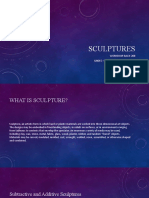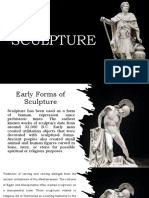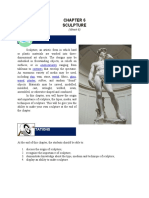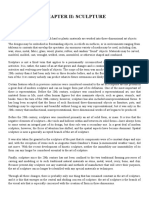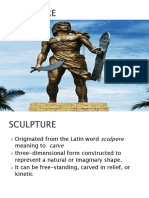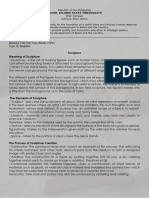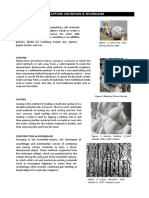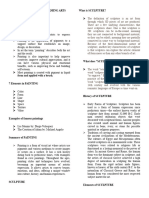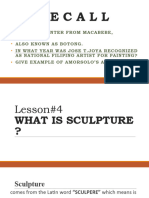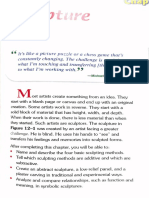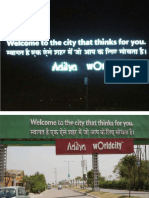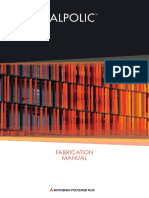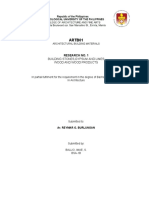0% found this document useful (0 votes)
81 views2 pagesSculpture Notes
Sculpture is a three-dimensional art form created from various materials, including stone, metal, and clay, and can be categorized into free standing, relief, and linear types. The methods of creating sculptures include subtractive (carving), additive (modeling), substitution (casting), and constructive (fabrication). Notable Jamaican sculptors include Edna Manley, Basil Watson, and Alvin Marriott, among others.
Uploaded by
susanp0290Copyright
© © All Rights Reserved
We take content rights seriously. If you suspect this is your content, claim it here.
Available Formats
Download as PDF, TXT or read online on Scribd
0% found this document useful (0 votes)
81 views2 pagesSculpture Notes
Sculpture is a three-dimensional art form created from various materials, including stone, metal, and clay, and can be categorized into free standing, relief, and linear types. The methods of creating sculptures include subtractive (carving), additive (modeling), substitution (casting), and constructive (fabrication). Notable Jamaican sculptors include Edna Manley, Basil Watson, and Alvin Marriott, among others.
Uploaded by
susanp0290Copyright
© © All Rights Reserved
We take content rights seriously. If you suspect this is your content, claim it here.
Available Formats
Download as PDF, TXT or read online on Scribd
/ 2







